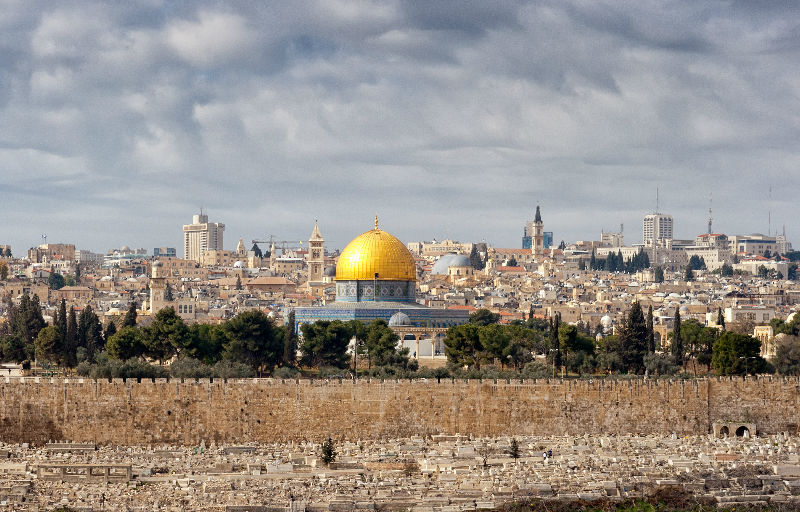
Jerusalén
Jerusalén, la declarada capital de Israel es una de las ciudades más interesantes y fascinantes del mundo a parte de ser la Ciudad Santa para las 3 religiones monoteistas: el Islam, el Cristianismo y el Judaismo.
Podemos dividir la ciudad en 3 partes importantes: La Ciudad Antigua, La parte Este y la Ciudad Nueva.
La Ciudad Antigua: Es la mayor atracción turística en Jerusalén por razones religiosas e históricas. La ciudad fortificada data desde hace 3000 años y guarda dentro de sus muros los edificios más emblemáticos, representativos y santos de cada religión. El area conocida como el Monte del Templo se encuentra la Mezquita de Al Aqsa junto con la Cúpula Dorada lugar Santo para los musulmanes, no muy lejos en el Muro Este de esta explanada se encuentra el Muro de los Lamentos, el muro de soporte original de la explanada donde estuvo el primer y segundo templo. Lugar de oración más sagrado del judaismo. Cerca encontramos el barrio cristiano con la Via Dolorosa lugar de actividad del Mesias, por donde Jesús camino con la Cruz a cuestas y donde fué crucificado y al tercer dia resucito. La ciudad antigua se divide en cuatro barrios: Barrio Judio, Barrio Musulman, Barrio cristiano y Barrio Armenio.
Caminar por sus callejuelas es una experiencia única e inolvidable, tanto religiosa, cultural, arquelógica como histórica. El mercado árabe con sus aromas de especias ofrece un ambiente arraigado a la cultural popular de Medio Oriente, con unas ofertas en ropa tradicional, moderna y toda clase de comidas tipicas de la comarca, asi como tambien frutas, verduras y deliciosos dulces. Cabe mencionar también la oferta enorme en tiendas de souvernirs locales.
En el distrito de lla Ciudad Este o la parte palestina, se encuentra la sede de el Museo Rockefeller y El Jardín de la Tumba (considerado el lugar de la Muerte y Resurección de Jesús para los creyentes protestantes y evangélicos).
La Ciudad Nueva que delimita con la Ciudad Antigua tiene un número predomintante de ciudadanos judios. Es una ciudad Moderna y viva con una oferta increible en restaurantes y cafeterías. Con los edificios e instituciones más importantes del país, así como el Parlamento , el Museo de Israel y el conocido Museo del Holocausto, Yad Vashem, Una ciudad de contrastes, increibles cualidades y muy hospitalaria.

Avdat Parque Nacional
La ciudad de Avdat tambén conocida como Ovdat, es una de las Ciudades Navateas deldesierto del Negev declaradas Patrimnoio de la humindad por la Unesco. Fué junto con otras ciudades del Neguev, uno de los puntos estratégicos entre la ruta de Petra a GAza. Estas ciudades servian de descanso para las caravanas de camellos ue transportaban especias e incienso hasta el Puerto de Gaza donde se embarcaban dirección Europa entre los siglos II a.C. y II de nuestra era. Una de las ruinas más interesantes de iglesias bizantinas en lugares Navateos con unas vistas excepcionales del valle desertico.

Timna

Mitzpe Ramon

Mamshit

Beer sheva

Rahat

Tel sheba

Tel arad

Qumran

Masada

Hebron

Bet el

Tel balata

Sebastia

Nablus

Bethlehem

Ashdod

Qasr el Yahud

Tel aviv

Jaffa

Beit shean

Mount carmel

Zippori

Katzrin

Mount tabor

Gamla

Megiddo

Rosh hanikra

Yardenit
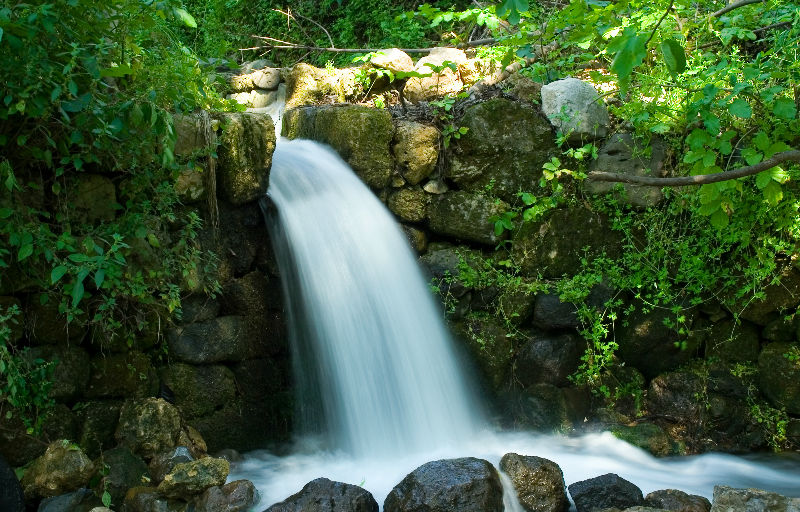
Tal Dan
Archaeological site of ancient city, first occupied in neolithic era, with restored Bronze Age gate.
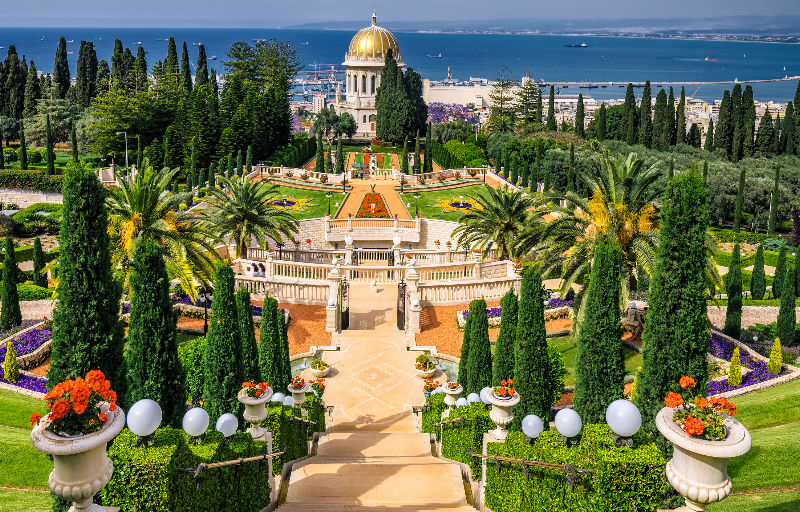
Haifa
Haifa is the third-largest city in Israel – after Jerusalem and Tel Aviv – with a population of 281,087 in 2017. The city of Haifa forms part of the Haifa metropolitan area, the second- or third-most populous metropolitan area in Israel. It is home to the Bahá'í World Centre, a UNESCO World Heritage Site and a destination for Bahá'í pilgrims.
Built on the slopes of Mount Carmel, the settlement has a history spanning more than 3,000 years. The earliest known settlement in the vicinity was Tell Abu Hawam, a small port city established in the Late Bronze Age (14th century BCE). In the 3rd century CE, Haifa was known as a dye-making center. Over the millennia, the Haifa area has changed hands: being conquered and ruled by the Canaanites, Israelites, Phoenicians, Persians, Hasmoneans, Romans, Byzantines, Arabs, Crusaders, Ottomans, and the British. Since the establishment of the State of Israel in 1948, the Haifa Municipality has governed the city.
As of 2016, the city is a major seaport located on Israel's Mediterranean coastline in the Bay of Haifa covering 63.7 square kilometres (24.6 sq mi). It lies about 90 kilometres (56 mi) north of Tel Aviv and is the major regional center of northern Israel. According to researcher Jonathan Kis-Lev, Haifa is considered a relative haven for coexistence between Jews and Arabs. Two respected academic institutions, the University of Haifa and the Technion, are located in Haifa. The city plays an important role in Israel's economy. It is home to Matam, one of the oldest and largest high-tech parks in the country; Haifa also owns the only underground rapid transit system located in Israel, known as the Carmelit. Haifa Bay is a center of heavy industry, petroleum refining and chemical processing. Haifa formerly functioned as the western terminus of an oil pipeline from Iraq via Jordan.
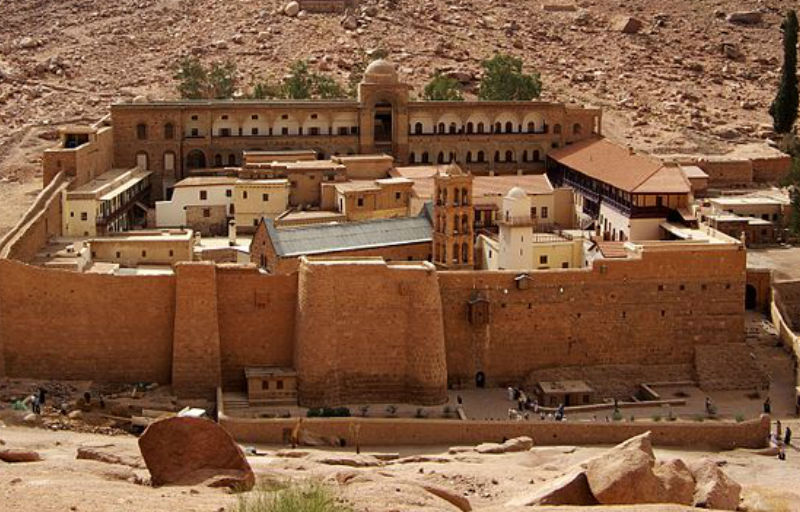
Sinai - St. Catherine Monastery
The Monastery of Saint Catherine and Mount Sinai (Jebel Musa) are two most famous sites in the 4,350 square kilometers Protectorate of Saint Catherine. Established in 1996, the Protectorate contains a wealth of cultural, natural and religious history. The unique high altitude desert ecosystem and the religious landscape are intertwined with local Bedouin life and culture.
St. Catherine’s Monastery has been one of the great centers of religious pilgrimage for over fifteen centuries. The site includes important religious and historical structures, a 6th century church reputed to sit on the site of the burning bush, and a library of ancient manuscripts and icons (second only to the collection of the Vatican).
Also located there are Arab mosaics, paintings and ornaments.
Inside the walls of the monastery lies the Fatimid Mosque.
The monastery itself was built by Emperor Justinian to protect monks in the region and to honor the site of the burning bush. Mount Sinai is believed to be the place where Moses received the Ten Commandments. It also has significance in Islam as the place where Mohammed’s horse rose to heaven.

Massada - Qumran
Qumran is primarily known as an archeological site, the place where the Dead Sea Scrolls were found.
In 1963 – 1965 a large archaeological expedition uncovered Herod’s fortress and other buildings, palaces, storerooms and water facilities.
IN 1947, a Bedouin shepherd boy came across the scrolls while trying to retrieve a lost goat. He found them in a cave on a Cliffside stored and protected in years. The scrolls are now on display in the Israel Museum in Jerusalem.
Since the retrieval of the scrolls, excavations in the area have revealed much about the people – the Essenes – who wrote them, including where and how they lived. Ritual baths, a pottery workshop and a cemetery have also been uncovered. The Essences lived in Qumran from about 150 BC until 68 AD, working the land and studying religious texts.
The original home of the Dead Sea Scrolls.
Masada , the ancient fortress built by King Herod the Great atop a lofty natural plateau overlooking the Dead Sea, was declared a UNESCO World Heritage Site in 2001.
In adding Masada to its prestigious World Heritage List, UNESCO cited several aspects of Masada’s universal value: the site preserves a grand first-century Roman villa, the remains of the most complete Roman siege system in the world, and tells the story of the tragic events leading to the last chapter of the Great Revolt of the Jews against the Romans - the last stand of the rebels who became a symbol of the struggle fight for freedom from oppression.
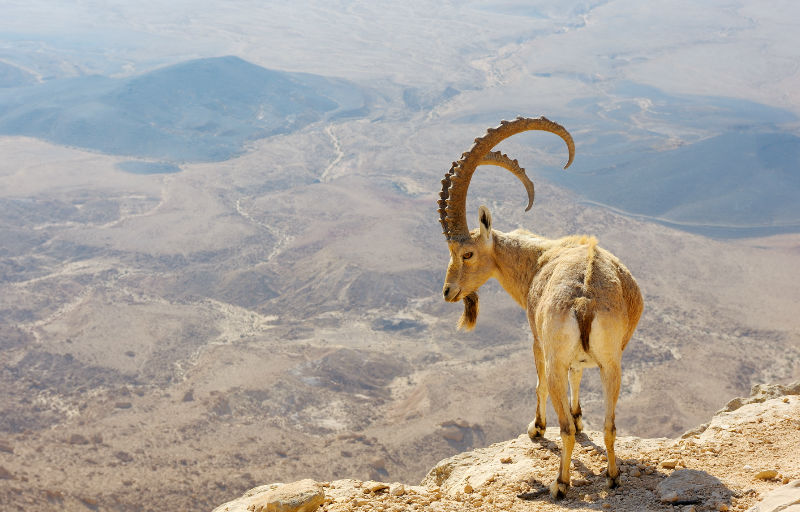
Ein Gedi
Ein Gedi, a desert oasis close to the Dead Sea, is an area of springs, waterfalls, polls and vegetation located in the arid desert. Wildlife is to be found in abundance.
It is believed that the oasis was first inhabited in the Chalcolithic Age (3000 BC); during the Byzantine period it was abandoned. There are Biblical references to Ein Gedi in the encounter between David and Saul (1 Samuel 24) and ‘ Song of Songs’ (1:14).
Things to see: the Nahal David Nature Reserve – a canyon overlooking the Dead Sea; Dodim Cave – Lovers Cave; Chalcolithic Temple – dedicated to worshipping the moon – Tel Goren – the first Israelite settlement; and the ruins of an ancient synagogue from the 2nd or 3rd century, boasting an interesting mosaic floor.
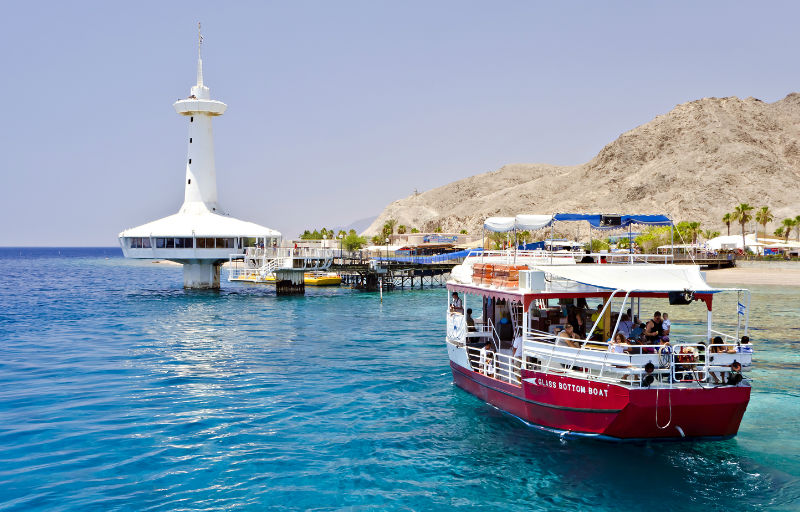
Eilat
Eilat is situated on the tip of Israel’s southern coast in the desert between Egypt and Jordan. The city is very modern with little historic interest apart from its dramatic and rapid growth from a small desert village, mainly because of Israel’s fear that Egypt and Jordan might try to close access to the Red Sea.
The city has a ‘tourist resort’ feel to it, offering large glitzy hotels with private beaches and water-sports. It also offers an array of different restaurants, cafes, bars, clubs and shops. It’s very popular place for a stop-over for travelers arriving from or leaving to neighboring countries.
Eilat, the desert oasis.
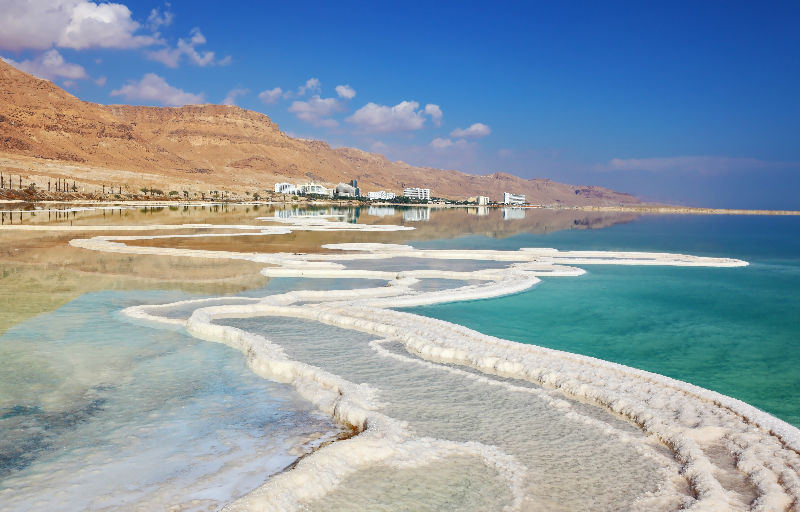
Dead Sea
Given that no living organisms can live in or around its waters, the Dead Sea was a forbidding place until 1848, when the US Navy explored it for the first time. However, it wasn’t until the British arrived 70 years later that real activity around the sea began.
The Dead Sea, located at the world’s lowest point, 400m below sea level, is 65km long and 18km across at the widest point – although its water levels fluctuate.
It is fed mainly by the Jordan River and enhanced by smaller rivers and springs. With no outlet for the water, and a high level of evaporation caused by the hot climate, the water has grown increasingly saline. The water’s salt content is about 30% - far higher than the 4% of ordinary sea water.
The Dead Sea is believed to have healing powers, relaxing nerves and clearing skin conditions and bronchial passages. Visitors to the Dead Sea receive an unforgettable experience as the high salt content makes sinking virtually impossible.
In the Bible, the Dead Sea is referred to as the Sea of Arabia, the Salt Sea and the Eastern Sea (Deuteronomy 3:17; Joshua 3:16; Numbers 34: 12; Ezekiel 47:18).
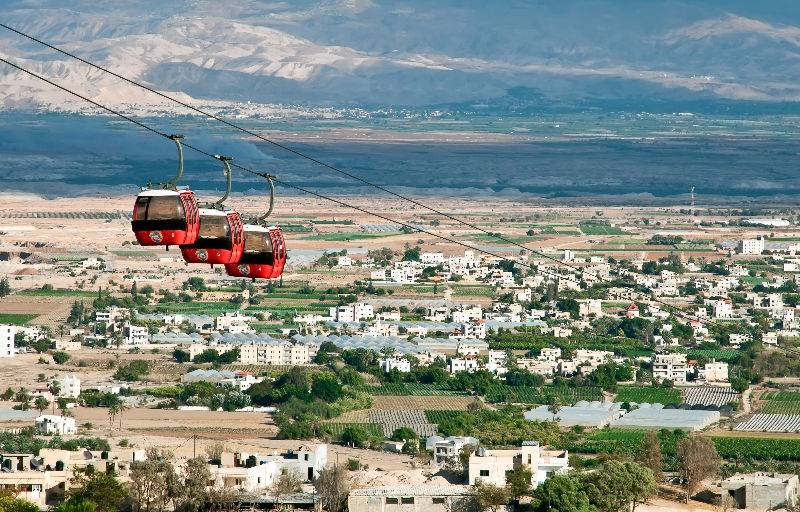
Jericho
Jericho, believed to be the oldest town in the world, dating back more than 10,000 years, is also the lowest town on earth, 260 meters below sea level. It is known as the ‘City of Palms’ because of its famous year-round production of fresh fruits and vegetables due to the moderate climate. The area of Jericho contains some of the most important historical sites and is frequently mentioned in the Bible. The Old Testament’s Book of Joshua tells how Jericho was the first town captured by the Israelites after they laid siege to it and bought down the walls with the blare of their priests’ trumpets.
The domestication of plants and animals and the invention of pottery took place in ancient Jericho 1,000 years before similar developments in Mesopotamia and Egypt, while the walls and towers of Jericho preceded the pyramids of Egypt by 4,000 years.
Ancient Jericho, known as the Tel of Jericho, is situated on a mound overlooking the Jericho oasis. Excavations have uncovered 23 layers of ancient civilizations dating back to 9,000 BC. Many structures are still visible today, including the oldest known stairs in the world, the oldest wall and the massive defense tower – dating back to 7,000 BC.
Places to visit: Hisham’s Palace, of importance to historians as it is believed to be one of the earliest forms of Islamic architecture, from the 7th century, showing Persian and Byzantine influences; an ancient synagogue with mosaic floor from the 5th of 6th century.
Jericho, the City of Palms.
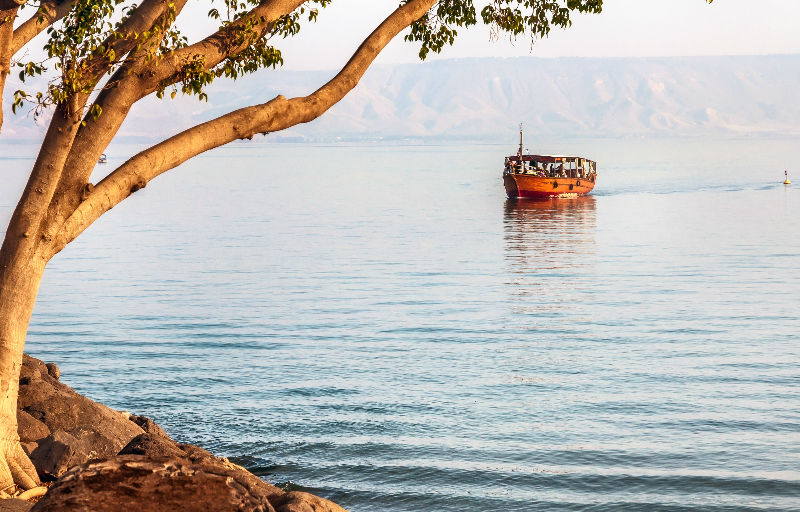
Sea of Galilee
Safed, a town set in a hilltop retreat 900 meters above sea level, boasts an excellent climate and rich heritage of Jewish mysticism and an industrious artists’ colony.
The history of Safed dates back only 500 years to the beginning of the 16th century when Jews settled and established one of the largest settlements in Palestine. Later, in the 1920s and 1930s, clashes between local Arabs and Jews led to the Arabs being forced to leave the town.
Safed is one of four main holy cities for Jews in Israel and the occupied territories, together with Jerusalem, Hebron and Tiberias.
The old town consists of narrow cobblestone alleys presenting artists’ galleries, medieval synagogues and houses. The main attraction is the artists’ quarter, where Arab buildings and mosques have been turned into galleries and studios.
From the top of the mountain you can enjoy magnificent views east to the Golan, north to Mount Hermon and Lebanon, west to Mount Meron and the Amud Valley, and south to Tiberias and the Sea of Galilee.
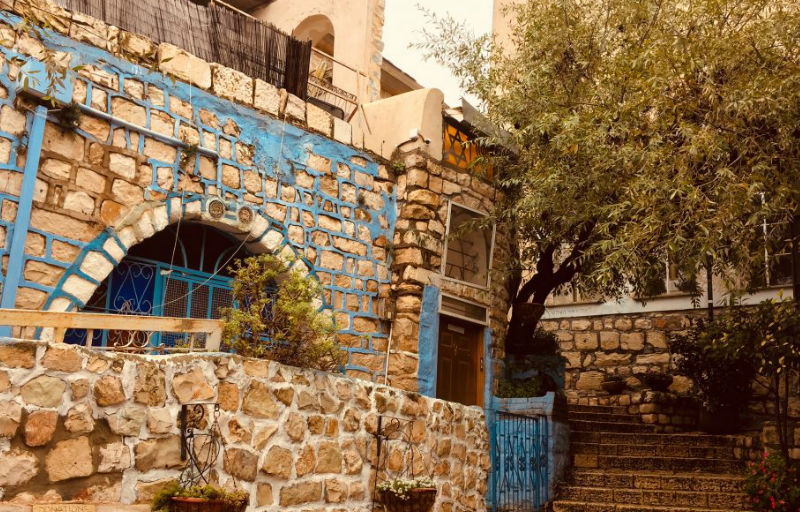
Safed
Safed, a town set in a hilltop retreat 900 meters above sea level, boasts an excellent climate and rich heritage of Jewish mysticism and an industrious artists’ colony.
The history of Safed dates back only 500 years to the beginning of the 16th century when Jews settled and established one of the largest settlements in Palestine. Later, in the 1920s and 1930s, clashes between local Arabs and Jews led to the Arabs being forced to leave the town.
Safed is one of four main holy cities for Jews in Israel and the occupied territories, together with Jerusalem, Hebron and Tiberias.
The old town consists of narrow cobblestone alleys presenting artists’ galleries, medieval synagogues and houses. The main attraction is the artists’ quarter, where Arab buildings and mosques have been turned into galleries and studios.
From the top of the mountain you can enjoy magnificent views east to the Golan, north to Mount Hermon and Lebanon, west to Mount Meron and the Amud Valley, and south to Tiberias and the Sea of Galilee.
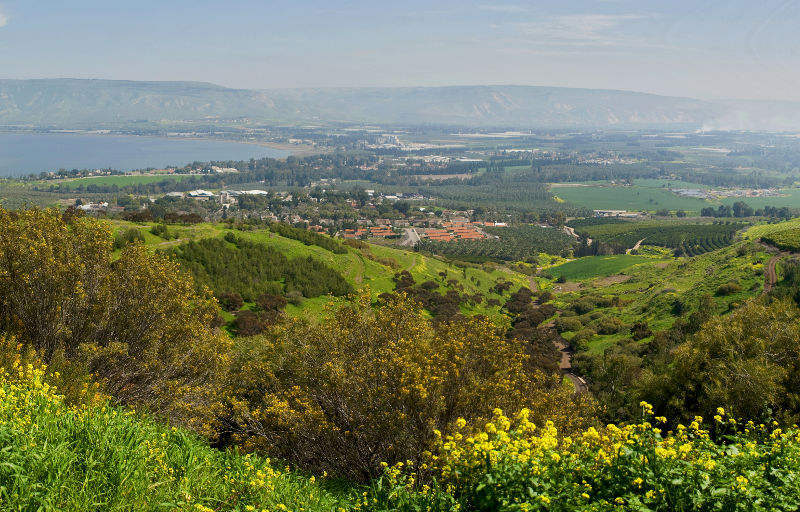
Golan Heights
The Golan Heights is a mountainous region complemented by beautiful wild flowers, flowing rivers and gushing waterfalls. Katzin, the capital of the Golan region, is a new town offering the Golan Archeological Museum, accommodation and restaurants.
The Golan was occupied by Israel during the Six-day, when all the Syrian inhabitants fled except for the local Druze inhabitants, who live in four villages in the region. The Druze carry on a traditional way of life, working the land, harvesting their crops – mainly apples – and raising goats, sheep and cows.
Archeological excavations have uncovered historical remains from the following periods: Canaanite, Roman, Byzantine, Crusader and Mameluke.
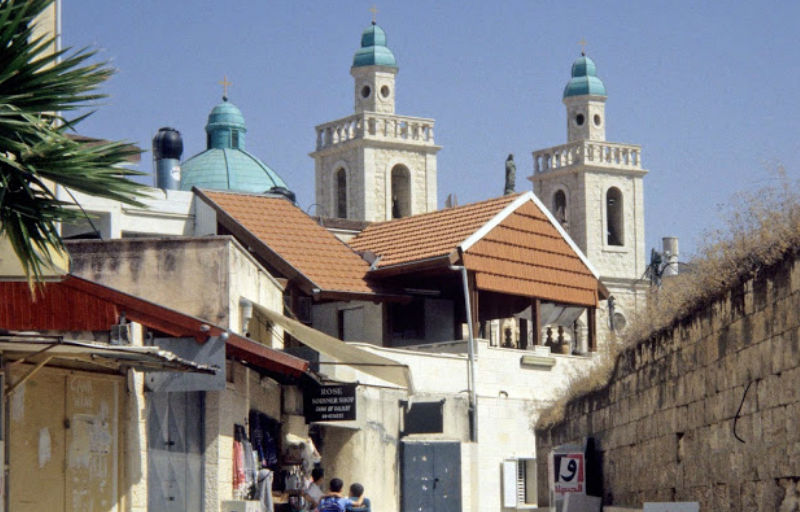
Cana
Cana is an Arab town north-east of Nazareth, on the road towards Tiberias. It is believed to be the site of Jesus’ first miracle, when he turned water into wine at a wedding reception (John 2:1-11). To commemorate this event Franciscan church exhibits a type of jar said to have contained the water Jesus turned into wine.
Cana was also the home of Nathanael, a disciple of Jesus (John 21:2). A Chapel now stands over the site of his house.

Caesarea
Caesarea is the city Herod the Great dedicated to Caesar Augustus more than 2,000 years ago. Today it is a fast-growing coastal resort and one of Israel’s major tourist destinations, attracting history lovers from around the world. Caesarea is also one of the top archeological sites in the country. The Roman city was built in 22 BC over the site of a Phoenician port and was home to the Roman governors of Judea, making it the local Roman capital.
Today it boasts the Roman remains of an aqueduct, hippodrome and amphitheatre. The hippodrome is now a rectangular ploughed field; however, you can still see what was once an arena capable of holding 20,000 spectators for chariot races. The amphitheater is a venue still very much in use, frequently staging concerts. The structure offers visitors a rare chance to appreciate the Romans’ building expertise and enjoy an important relic of their Empire. The aqueduct, near the sea, was built in the 2nd century and carried water from mountain springs to Caesarea. Also on view are Emperor Hadrian’s statue and two white, headless marble statues, thought to be of two Roman emperors, though of whom no one is certain.
To visit the Crusader city, surrounded by walls and open only to the sea, you enter through the East gate, built in the 12th century. In 1101 the Crusaders discovered what they believed to be the Holy Grail. Other sights: the church built over Caesar’s temple, and the mosque constructed by the Turks in the 19th century. There are also many shops and restaurants offering present-day entertainment.
Caesarea, the Roman capital of Israel.
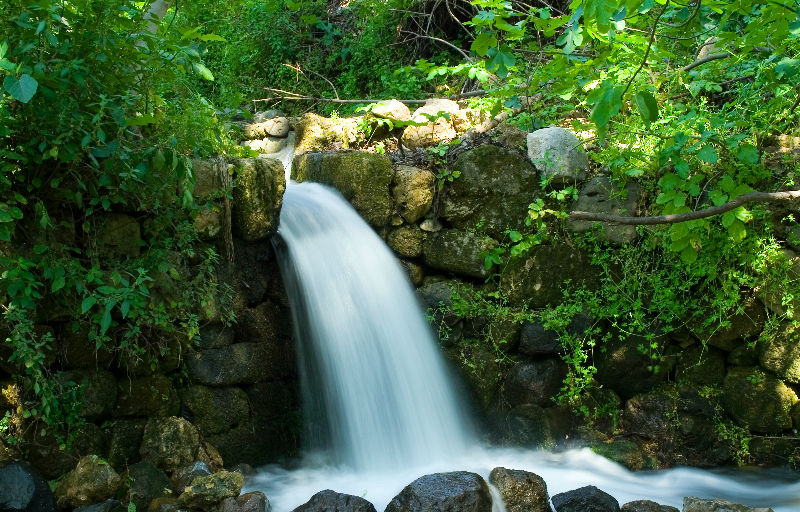
Banias
At the foot of Mount Hermon in the Golan (1150ft above sea level) lies Banias Nature Reserve. Its natural surroundings make it a beautiful location and it is possible just to walk by the River Hermon, coming across historic sites and ending at the Banias waterfall, the largest in the region and definitely worth seeing.
The Greek Seleucids conquered the area in 198 BC. Banias is the Arabic name of the Hellenic city of Paneas (the Greek god of herds and shepherds). The area was chosen by Philip, son of King Herod, as the capital of his kingdom of the Roman Empire, named Caesarea Philippi. In Biblical history, it is believed that Jesus visited the city, where he told his disciples that his church would be built on Peter, the rock (Matthew 16:13-20). Things to see: the ruins of shrines and temples, a Herodian building, the tomb of St. George (a Muslim saint), and Crusader ruins.
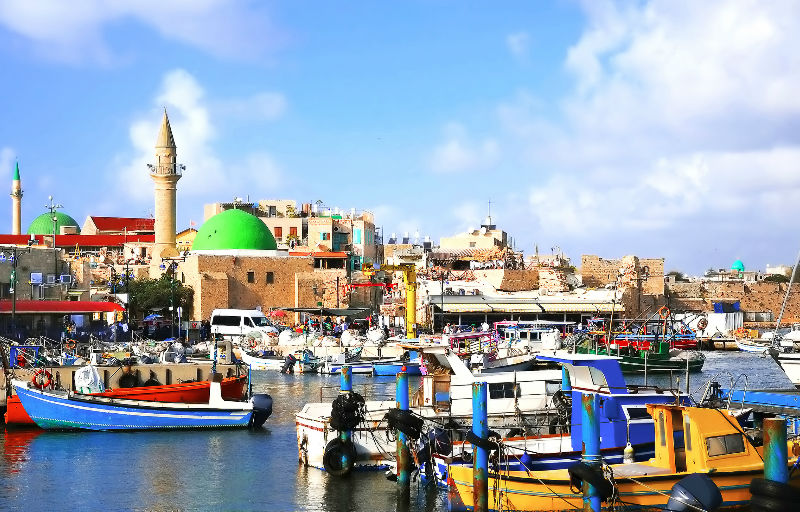
Acre
The city of Acre, or Akko, is one of the oldest cities in the world, inhabited since its founding in the period of Pharaoh Thutmose III (1504-1450 BC).
The city has been largely forgotten in modern times, and tourists are not catered for as they are in other cities in Israel. Akko has not benefited from rise of the global tourist industry, although it continues to attract tourists in large numbers. Today this coastal city is surrounded by what remains of the impressive sea walls defending the solid stone buildings that belong to the people of old Akko. The modern city is home to the country’s steel industry, while the once important Palestinian port is home to small fishing fleets. Fresh fish is readily available on all restaurant menus!
The history of Akko is chequered and colorful. The still-visible fortress and sea walls are the work of a Bedouin sheikh, Daher el-Omar, who made the city his capital in the mid-18th century after capturing it from its Ottoman rulers.
The Turks were finally driven from Palestine in 1918 by the British, who used the fortress as a prison. Today it is the site of the Underground Prisoners’ Memorial Museum, which also tells the history of Akko.
Other places of interest: The beautiful, large green-domed Al-Jazzar Mosque, built in 1781 during Ottoman rule. The subterranean Crusader City, a series of domed halls under present-day Akko. The Hammam al-Pasha, the well-preserved bath house of the mosque, used until the 1940’s, with marble floors and domed ceilings containing colored glass. Walking along the city walls, you are blessed with spectacular views of the sea and the city of Haifa, as well as unforgettable sunsets.
Akko, a place to observe centuries of history.
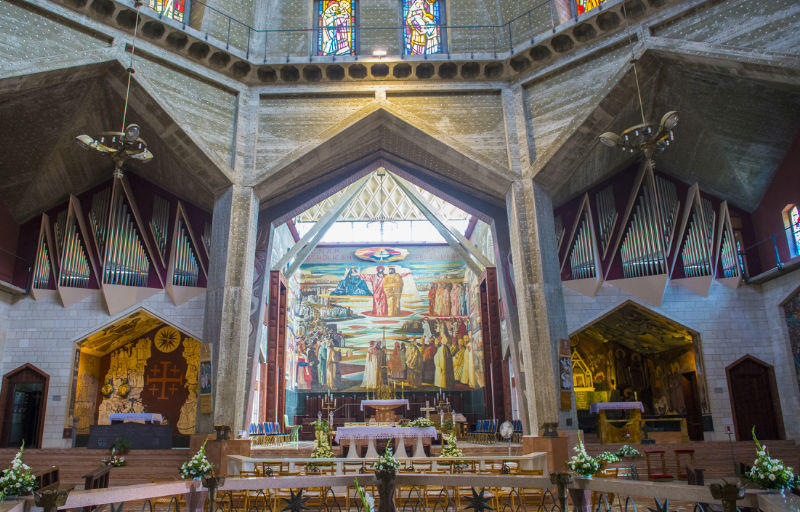
Nazareth
Nazareth is very important to the Christian faith, as it is widely believed to be the home of Mary and Joseph and the infant Jesus and home to some of the most important Christian shrines. Nazareth remains the center of the Christian mission movement in the Holy Land. It is also the largest Arab city in Israel, its population approximately half Christian and half Muslim. The 1950s saw the establishment of Nazareth Illit, a large Jewish industrial town which surrounds Nazareth.
The main places of interest, as in Jerusalem, are located in the old city dominated by its souq (market). The Basilica of Annunciation is believed to be the site where the Archangel Gabriel appeared to Mary to tell her that she was bearing Jesus, the son of God. On the lower floor is a sunken enclosure believed to be the traditional site of Mary’s house, while the upper level is still used for services, decorated with murals of Mary and the infant Jesus. Next to the Basilica are St. Joseph’s Church, where Joseph’s carpentry shop is believed to have stood, and the School of Jesus the Adolescent, built in 1918 in a mock-Gothic style. The Basilica is one of the most beautiful of Nazareth’s churches, offering fantastic views.
Next to the Greek Orthodox Church of St. Gabriel’s is Mary’s Well, where Mary collected water and where the Christian Orthodox believe the Annunciation took place. The water is reputed to this day to have healing power. The Greek Catholic Synagogue –Church is assumed in tradition to be where Jesus regularly prayed and later taught.
The old market is distinctive because of its winding steep streets and alleys with shops and market stalls. It is a working market with shops, cafes and restaurants enjoyed by locals and tourists alike. Enjoy a wonderfully memorable experience by visiting ‘Nazareth Village’, a museum recreating life in Nazareth as it was 2,000 years ago. The museum offers a unique window on the city’s history and the life of Jesus.
Nazareth has many places to stay from 5-star hotel to youth hostels. The city presents a good number of restaurants and cafes providing exceptional quality of food with typically Arab hospitality.
Nazareth, a place not to be missed.
Sephoris, a village near Nazareth, is considered the birth place of Mary’s parents, Joachim and Anna.